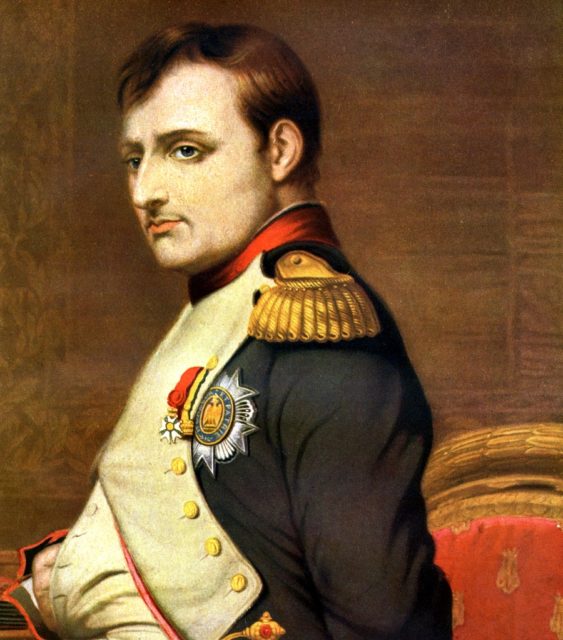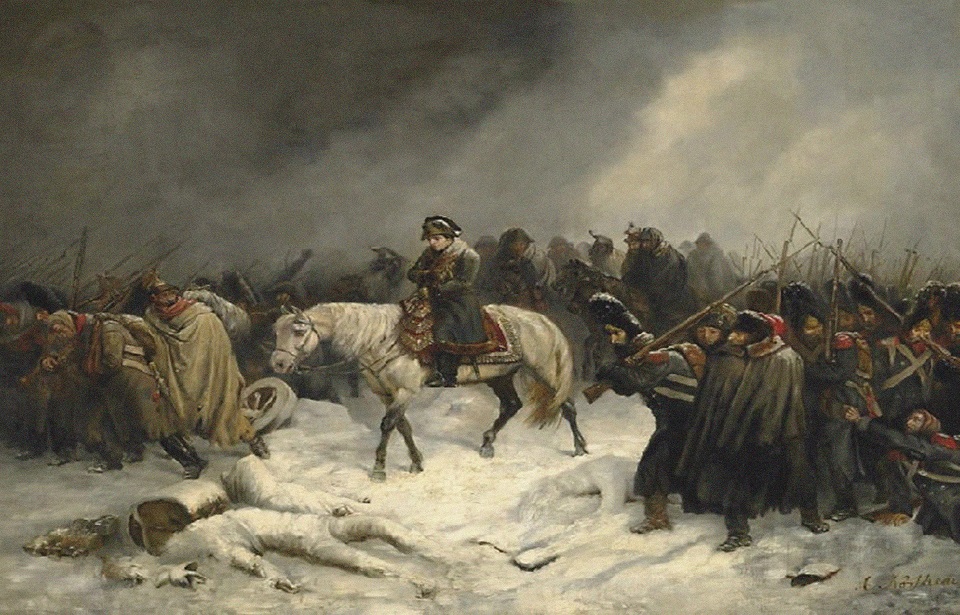In October 1812, Napoleon’s invasion of Russia reached a critical turning point. Despite a recent victory at the Battle of Maloyaroslavets, his exhausted army was now in full retreat. Out of Napoleon’s initial force of more than half a million soldiers, only 10,000 survived to leave Russia.
Historians have long puzzled over this devastating military failure, but in recent years, a new theory has emerged that might help explain the disaster, at least a bit. Let’s explore this theory more and hear what experts have to say about the events.
The Napoleon Tin Button Theory

This theory suggests that one of Napoleon‘s troubles stemmed from the buttons on his soldiers’ uniforms. At the time, French uniforms often featured tin buttons, but it was not yet known that tin exists in various allotropes, some of which cannot withstand very low temperatures.
An allotrope is simply a different structural form of an element in the same state. For instance, diamonds, coal, and graphite are all allotropes of carbon; each consists of carbon atoms arranged in distinct ways, resulting in materials with unique properties.
Likewise, tin has multiple allotropes, which could have posed a significant issue for Napoleon’s forces. Tin’s two main allotropes are alpha-tin and beta-tin. Alpha-tin is a brittle, powdery, dull-gray material with little practical use.
In contrast, beta-tin is a shiny, silvery metal that is malleable and easy to shape. However, if beta-tin is subjected to temperatures below 13°C for prolonged periods, it transforms into alpha-tin, essentially disintegrating into dust. This process is known as “tin pest.”
The French used beta-tin as it can be hammered into shape to produce neat, shiny buttons for their uniforms, but they were likely unaware that it can spontaneously transform to alpha-tin in low temperatures. Under normal circumstances, the tin buttons would have held up just fine, but when it was exposed to the extremely cold Russian winter (which reached as low as -40°C) for long periods of time, tin pest may have damaged the metal.
As the tin buttons turned to dust the French troops would have been unable to keep their coats sealed, and therefore would have been vulnerable to the brutal temperatures seen during the winter.
Napoleon’s army had also been ravaged by disease, starvation, desertion, and death at the time of their retreat, so it’s not like the unsuitable buttons were solely to blame.
But Is It An Urban Legend?

While this could be a large factor in Napoleon’s retreat, many have put the idea down as an urban legend. There are a few issues with the seemingly logical problem of degrading buttons. First, many armies at this time used bone or wood buttons as it was much cheaper. Although Napoleon’s army certainly did in part use tin buttons, it is unlikely that they were commonplace.
The next problem relates to the tin pest itself. It affects pure-tin the most and can be avoided by mixing it with other elements such as lead. The tin used by France would have been quite impure, so it would have unintentionally been more resistant to the cold.
Laboratory tests revealed that unalloyed tin needed to be in low temperatures for about 18 months to develop significant tin pest damage, which is more than twice the length of the invasion. Although the temperatures the troops experienced in Russia were much, much lower, which would have accelerated tin pest.
New! Want to become a trivia master? Sign up for our War History Fact of the Day newsletter!
Lastly, soldiers’ accounts from the ordeal do not mention such shocking problems with their buttons.
For now, the jury is still out on what part tin buttons played in Napoleon’s losses in Russia. What we know for certain is that historians are still puzzled by Napoleon’s losses in Russia.
